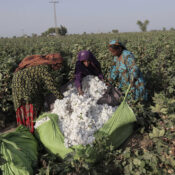
Climate Change Increases the Risk of Infectious Diseases in Children
Introduction:
Climate change, caused by human activities such as burning fossil fuels and deforestation, is having a devastating effect on the environment and all living organisms. Children, in particular, are highly vulnerable to its impact, and there is a growing concern about how climate change is affecting their health, education, and future. This article focuses on the impact of climate change on children’s health. The significant threat this poses to their well-being is an urgent issue that needs to be addressed by policymakers and society at large.
Rising Temperatures Pose Health Risks for Children:
Rising temperatures associated with climate change pose a severe health risk for children. According to a report by WHO, climate change is expected to result in an additional 250,000 deaths per year between 2030 and 2050, mainly attributable to malnutrition, malaria, diarrhea, and heat stress. Children are particularly vulnerable to heat-related illnesses such as dehydration, heat exhaustion, and heatstroke. Their smaller body size and limited ability to regulate their body temperature mean that they are at a higher risk of developing these conditions than adults.
limate Change Increases the Risk of Infectious Diseases in Children:
Climate change has been linked to the spread of diseases like dengue, malaria, and Lyme disease. Vector-borne diseases, spread by infected mosquitoes, ticks, or fleas, are particularly concerning. As temperatures rise, these insects can migrate to new areas, where population immunity may be low. Children are more at risk of contracting these diseases than adults. For example, malaria accounts for around 435,000 deaths per year globally, with 90% of these deaths occurring in Africa. Children under the age of five are the most vulnerable population for malaria, accounting for almost two-thirds of all malaria deaths worldwide.
Children Face Increased Food Insecurity Due to Climate Change:
Climate change is adversely affecting food production, leading to increased food insecurity, and malnutrition. Extreme weather events such as droughts, floods, and cyclones are reducing crop yields, making it difficult for families to provide their children with a balanced diet. Children’s nutritional needs are vital for growth, development, and overall health. Without access to nutritious food, they are at risk of malnutrition, stunted growth, and cognitive impairments.
Rising Sea Levels and Storm Surges Pose Threats to Children:
Climate change is causing ice caps and glaciers to melt at an alarming rate, leading to rising sea levels that are threatening children. Coastal areas around the world are increasingly threatened by severe flooding, which can damage homes and infrastructure, displace families, and disrupt communities. During natural disasters like hurricanes and typhoons, children are particularly vulnerable, as they may be separated from their families, exposed to dangerous conditions, and at risk of injury or illness.
Climate Change is Impacting Children’s Education and Future Opportunities:
Climate change is impacting children’s education in various ways. Heavy rainfall, snow storms, wildfires, and other extreme weather events can lead to school closures and disruptions, making it challenging for children to access education, hindering their academic development. In addition, the economic impact of extreme weather events can lead to job losses and financial stress for families, potentially limiting children’s future opportunities and perpetuating cycles of poverty.

Increased Air Pollution Affects Children’s Respiratory Health:
Climate change is worsening air quality around the world, which can have significant impacts on children’s respiratory health. Rising temperatures and increased humidity can create ideal conditions for pollutants to accumulate, exacerbating respiratory illnesses such as asthma, allergies, and chronic obstructive pulmonary disease (COPD). Children breathe more air relative to their body size than adults do, making them particularly vulnerable to the effects of air pollution.
The Mental Health of Children is Impacted by Climate Change:
Climate change can have serious impacts on children’s mental health, both in the short-term and over their lifetime. Natural disasters, displacement, and other effects of climate change can cause trauma, anxiety, and depression in children, leading to lasting psychological and emotional effects. Climate-induced migration can also be particularly traumatic for children, as they may be forced to leave their homes, communities, and support systems behind.
Climate Change is Disrupting Natural Ecosystems that Children Depend On:
Climate change is disrupting natural ecosystems and the plants and animals that children depend on for their survival and wellbeing. This includes freshwater resources, forests, wetlands, and coral reefs. Children who depend on natural resources for food, water, and shelter are especially vulnerable to the impacts of climate change, leading to food insecurity, malnutrition, and exposure to dangerous environmental conditions.
Climate Change and the Vulnerability of Children with Disabilities:
Children with disabilities are among the most vulnerable members of society, and they are particularly at risk from the impacts of climate change. Disasters such as floods, storms, or heatwaves can have devastating effects on children with disabilities, who may be unable to access appropriate healthcare or face additional hardships related to mobility and communication.
The Disproportionate Impact of Climate Change on Marginalized Children:
Climate change disproportionately affects marginalized children, including those living in poverty, indigenous communities, and those without access to basic services such as healthcare and education. These children are more vulnerable to the impacts of climate change, and more likely to suffer disproportionately from its effects. Climate change can exacerbate existing inequalities and create new ones, making it essential to address these issues through effective policies and programs.
Conclusion:
The impact of climate change on children’s health is a critical issue that requires urgent action. Children are among the most vulnerable to the effects of climate change, which affects their health, education, and future opportunities. Governments, policymakers, civil society, and individuals must recognize the urgency of the situation and take steps to reduce greenhouse gas emissions, promote climate resilience, and protect children’s health. It is our responsibility to create a sustainable future for generations to come, and this can only be achieved through collective action.
All Categories
- Agricultural Methods
- Agriculture and Women Small Farmers Rights Awareness
- Climate Change
- Disable and Human Rights
- Disable Jobs
- Donation
- Education
- Health Issues
- Organic Foods
- Organic Vegetables
- Orphans Children
- Plastic production and disposal
- Services
- Sinking in Scarcity
- Success Stories
- Uncategorized
- Waste Management
- Women Rights
- Youth Empowerment




